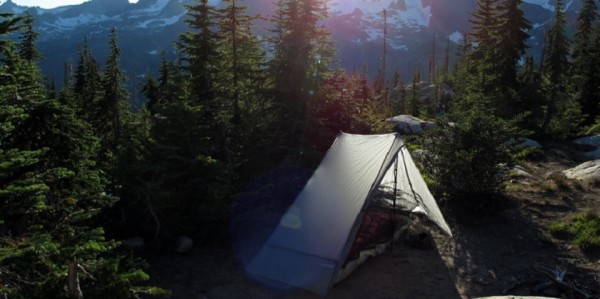

It’s fall, and for me, that means hiking and camping in the Sierra Nevada, an epic expanse of foothills and mountains that begin in my backyard in northern California. There’s nothing quite like hiking through the cool, crisp air and navigating the same terrain that pioneers, gold miners, and adventurers trekked through hundreds of years ago. No matter where you are, a short camping trip or foray into the woods, hills, or mountains offers an escape from the technology-saturated world we live in.
So if you’re looking to spend a few days or weeks off the grid before winter hits, here’s a tried and tested packing list I’ve put together based on my experience in Army Special Forces and as a survival instructor.
Recently, I’ve ditched my camping ruck in favor of a go-bag in order to make my hiking and camping adventures a little more interesting. For those who don’t know, a go-bag is where you store all the things you’ll need in case of a natural or man-made disaster. A go-bag, or bug-out bag, has everything you need to survive, so it’s kind of a no-brainer to use it while camping off the grid.
Related: A Survival Expert Lays Out What You Need In Your Bug-Out Bag »
First, you’ll need to find the right bag or pack.
I always look at bags or packs and their direct application, meaning every bag serves a distinct purpose. For example, I take a fly fishing bag for when I’m on-the-go, but still need to carry the survival essentials. Or, I’ll bring an ALICE (all-purpose lightweight individual carrying equipment) pack with an aluminum frame to comfortably and evenly distribute heavy weight over long distances.
For backpacking and camping, I need a go-bag that meets certain criteria: It’s got to be light so I’m not bogged down by the weight; water resistant to repel and not absorb moisture; it needs to have external pouches to retain water bottles and chow; and have a pocket that fits a compact firearm, so I can access it quickly without digging through my pack.
Photo courtesy of Mike Glover

Caption: A go-bag, seen here, let’s you store all the necessary items for off the grid camping, while keeping the weight minimal.
Once you’ve got your bag picked out, it’s time to load up on the essentials: food and water.
I’m of the belief that your food and water rations should be on the lighter side in order to maximize your ability to move. When I was a sniper in Special Forces, we carried a minimum of seven quarts of water, and six MRE’s during reconnaissance missions, but that much food and water just bloated our rucks.
Instead of carrying all that extra weight, carry a container to collect water, and a mix of iodine and chlorine tablets and a filter to sanitize it. For cooking, bring a metal container for collecting and boiling off water. For food, carry dense food bars containing carbs, protein, and a little fruit for fiber doesn’t hurt either — even survivalists have to poop. Remember that the average person can go nearly a month with no food. This doesn’t mean you shouldn’t bring anything to eat, it just means you should plan to hunt and forage for most of your meals, and carry just the necessities to maintain agility and proper brain function.
Food and water are a necessity, but they don’t mean a thing if you just freeze and die come nightfall, which is why you need fire and shelter.
Fire gets you warm, which in my environment, the Sierra Nevada, could mean the difference between life and death, but fire also means communication in case of emergency. Day fires with green foliage make thick white smoke, and fires at night can be seen for miles. A cooking fire gives you the ability to kill all the bacteria and viruses in food and water which will keep you from spending your wilderness trek sprinting into the bushes to relieve yourself every ten minutes. I bring two lighters, a pack of waterproof matches, and a flint rod. To get the fire started, tinder is great, but Vaseline is better, because it acts as fuel to kickstart a fire but also protects the skin and I always opt for multi-purpose over single action.
For shelter, I prefer a standard poncho with 550 cord. It’s compact, weather proof, retains heat, and blocks the sun. You can also augment your shelter with a SOL (survive outdoors longer) blanket. This inexpensive piece of mylar can fit into your pocket, retain body heat, can be used as a signal device and to contain water. It’s about the best bang for the buck in terms of survival equipment.
The remainder of your kit is optional, but things like compasses, maps, GPS, hygiene kit, or a firearm are a good idea. In the end, just pack what you feel you need, but keep it light and compact. In addition to being a practical way to pack for a camping trip, making your go-bag a camping bag has the added benefit of letting you field test it before the inevitable zombie apocalypse comes around. Don’t be the guy who opens his bug-out bag for the first time in a crisis situation and realizes he doesn’t know how to use any of the crap in there.
Mike Glover spent 18 years in the U.S. Army, most of that in Special Forces. Since 2013 he has been an independent contractor for a government agency where he continues to deploy to austere environments. Mike is the owner of FieldCraft LLC in northern California that specializes in survival equipment and training.
